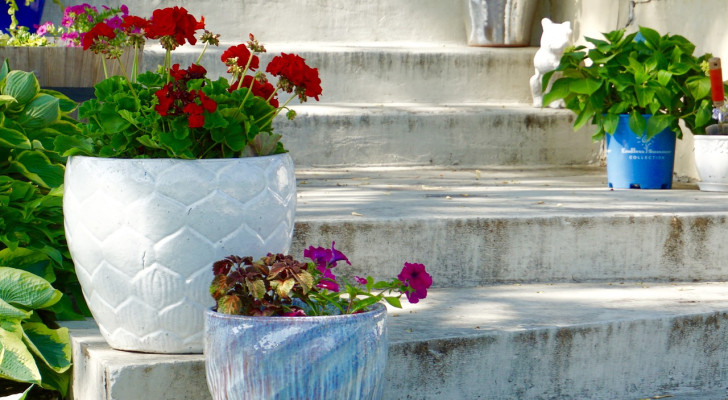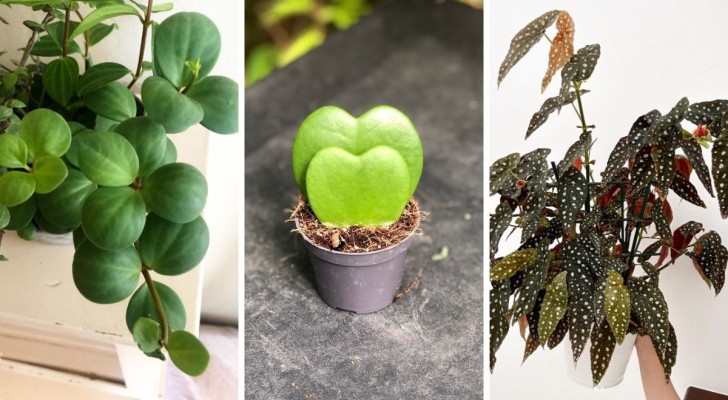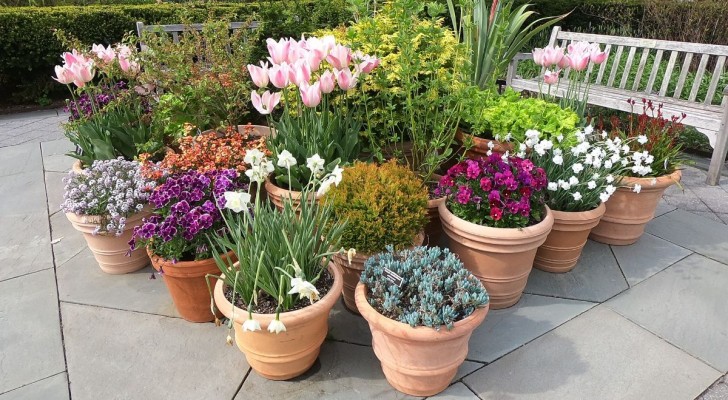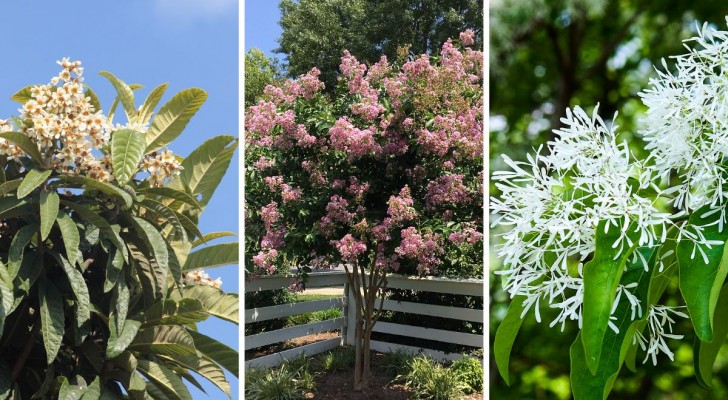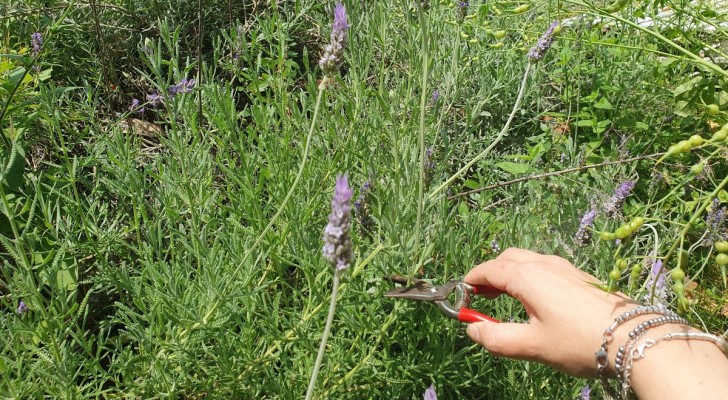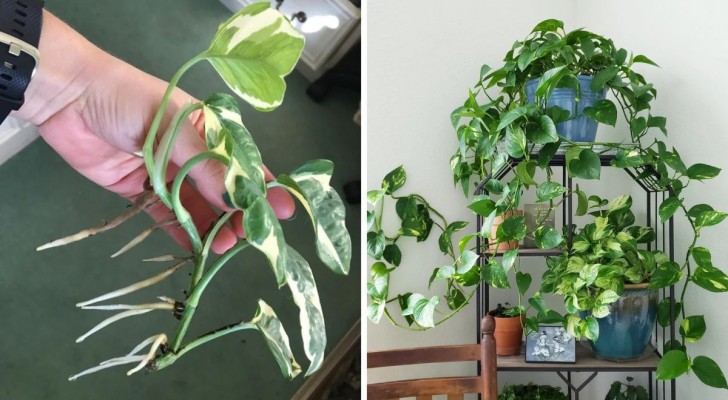The tips and tricks to have beautiful geraniums and make them last a long time
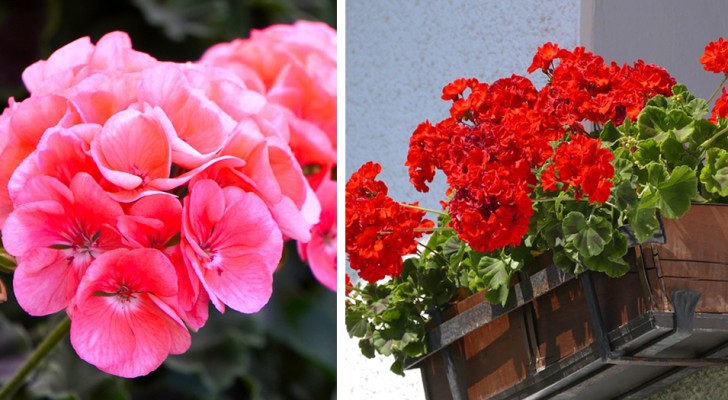
One of the plants that we most often see in homes are certainly geraniums: we find them ready to buy especially from late spring and throughout the summer, and we often notice them abounding in the flower boxes of many balconies or in large pots in the garden.
The reason for their success compared to many other ornamental plants lies in the fact that they are extremely decorative but above all rather simple to grow, and if we take care of them in the best way we can return to enjoy their beauty year after year.
Those plants with showy inflorescences that we commonly call "zonal" geraniums are actually pelargoniums, and are part of the Geraniaceae family which includes about 300 different species and subspecies, native mainly to Southern Africa. Depending on the type, the plants can reach a height ranging from 30 to 150-180 cm, and some are annual herbaceous, others perennial, some of the shrubs; moreover, they can be evergreen or deciduous, and some varieties have fragrant leaves (as well as very different shapes and colours) that make them truly fascinating.
The so-called zonal geraniums and the francesini (those with smaller flowers, thin and supple stems, often with a drooping habit), are the easiest to find in shops, markets or supermarkets. For special and collectible varieties, however, it is worthwhile to inquire online at specialised nurseries (some also sell by mail order) or go to the numerous horticultural fairs organised in spring and autumn almost everywhere.
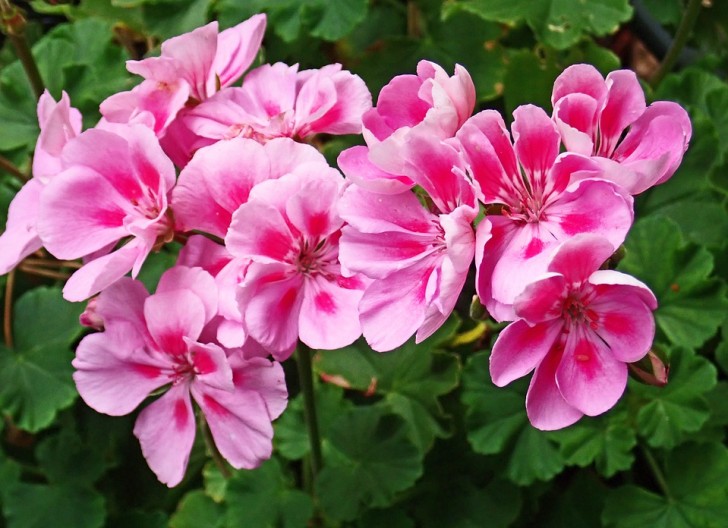
Exposure
The most common pelargoniums (including Frenchmen) love the sun, so you need to ensure them several hours of direct sun. indoors this means guaranteeing at least 4 hours of direct light (or providing plant growth lamps) on south / west facing window sills. Some of the rarest and most collectible varieties, on the other hand, prefer an accommodation in partial shade or at least sheltered during the hottest hours of the day, otherwise they risk becoming considerably damaged.
Unless you live in areas that tend to be warm, therefore, your geraniums can remain in the garden or on the balcony without problems during the summer, perhaps by arranging a saucer to collect water in the hottest periods. When autumn is still mild, you can still leave them outside, removing the saucers when the rains begin to intensify (so as to avoid water stagnation) and then, with the arrival of the first night colds, you will have to repair them.
The ideal temperature for most of these plants, in fact, is around 10-15°C at night and 18-23°C during the day.
This means that in winter the more robust species must be placed in a corner sheltered from winds and rain, or covered with non-woven fabric (which, however, is sometimes not enough to protect them from the nighttime cold peaks of winter). For the more delicate ones - and generally in any area where the temperature at night often drops below 4 ° - it is advisable to collect them at home, always guaranteeing the right amount of light per day, or in covered and sheltered greenhouses (even those do-it-yourself), which you will need to remember to ventilate once a day or at most every two days.
Irrigation
For most plants, including pelargoniums, the golden rule applies that you must water abundantly only when the soil has completely dried up. Depending on the climate of your homes and the time of year, therefore, this translates into more frequent watering in summer (two or even three times a week) which gradually thins out with the arrival of cold weather, when the geraniums are repaired. indoors (if it's not excessively hot in the room) they can go on for a few weeks before needing to be watered again. If in the garden, in cold periods, sometimes even just the humidity of the night and the rains are enough, for long periods, it is always worth checking the soil.
To understand if the soil is dry, insert a finger in order to feel if the earth is still damp under the surface layer of 5-7 cm. If it is damp, wait a couple of days before checking again: geraniums, in fact, are very afraid of root rot, which often causes their death.
Fertilisation
The geraniums kept in pots need fertilizer balanced in nitrogen, phosphorus and potassium (20-20-20), while if you can keep them in the ground (in the hottest places even in winter it is possible), simple compost could be enough and organic fertilizer before being buried.
Potassium is the one that intensifies the color the most, while nitrogen promotes the growth of the plant, and you must be very careful not to overdo it in order not to force an unnatural development of the specimen.
There are both liquid and granular fertilizers, the important thing is that the three components are present in equal parts. The frequency of administration is indicated on the packaging, but as a general rule it is always valid to refrain from fertilizing the plants in the dormant period (autumn and especially winter) and when it is too hot.
Avoid natural remedies that acidify the soil too much, such as coffee grounds.
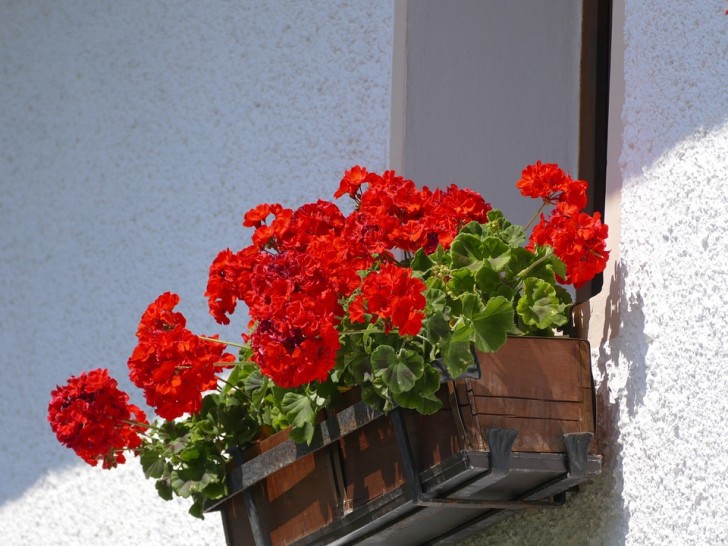
When to plant and prune them
The most convenient way to grow geraniums is in pots, one or two sizes larger than that in which they are contained at the time of purchase, and then gradually increased over the years. Keeping them in pots means they can be moved easily when winter arrives. For this reason, there are also those who bury them with the whole jar, in order to extract them if necessary. It should be noted, however, that this remedy may have the drawback of having to tear off any roots that may have escaped and have taken root in the soil of the garden.
The best time to plant them (or transplant them) is as soon as the winter cold ends, when there is no longer any risk of night frosts or sudden cold spikes.
As for pruning, most species tend to grow with a somewhat disordered posture if left to themselves, so it is always advisable to prune at the end of summer if they have spiked too much, shortening the branches that are too long to make the plant branch, so that it grows with a more compact habit. The plants can also be sprouted again by mid-April, after the end of the cold, but in a more delicate and purely containing way, since it could compromise flowering.
Propagation
Pruning in late summer allows you to use the cut branches to propagate the plants by cuttings: between September and October, in fact, temperatures are still mild enough to allow the pieces of branches obtained from pruning to root enough to survive the winter. Even with the cuttings obtained from any pruning at the end of winter, new plants can be created, which, however, will most likely not be able to bloom in time for that year.
During the whole vegetative phase, then, it is always recommended to inspect the plants and remove any dry leaves and stems: in the zonal geraniums they can generally be removed very easily, gently detaching them with your hands, but if you notice that they do even a minimum of resistance, instead of risking to break them and tear the plant exposing it to diseases and infections, use sharp and sterilized scissors for a clean cut.
Parasites
The most common pelargoniums tend to be very resistant plants, but unfortunately a very harmful parasite seems to be spreading more and more, that is a butterfly known as Farfalla or Licena del geranium, whose scientific name is Cacyreus marshalli.
It is an insect with gray or light brown wings about 30 mm long, which in the adult form show cream-colored streaks, and whose larvae (about 10 mm) are light green. Originally from South Africa, it quickly spread to Europe and Asia.
This butterfly creates visible damage especially during the hot season, when the larvae are most active: they are, in fact, that feed mainly on the flowers until they eat them completely, and sometimes they cause showy holes even in the leaves (if instead you only see the holes of the leaves, it is more likely that they are snails).
These parasites develop more slowly in cold periods, and are unable to survive the winter only in places where very low temperatures are reached, otherwise unfortunately they continue to thrive. Although the larvae remain hidden in the buds, dark specks and pinholes can be seen in the sepals or stems.
To treat plants affected by these parasites it is recommended to use a systemic insecticide, that is, which is administered on the ground and penetrates and spreads throughout the plant. This type of product generally manages to protect the plant for a month, so it is likely that the administration will have to be repeated from the end of spring until the butterflies have been eradicated. For more severe cases, the second dose can also be administered two weeks after the first.
Happy gardening!
